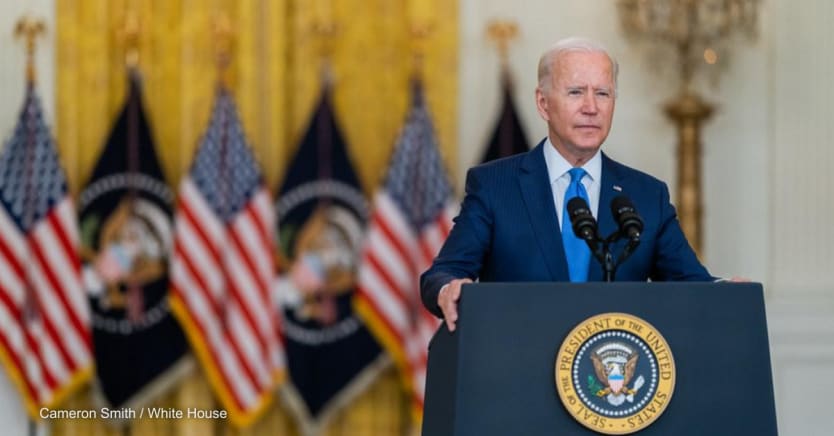
President Joe Biden’s administration took office with lofty promises to restore U.S. leadership on the global stage — including on issues central to development cooperation, such as the COVID-19 response and climate change. One year later, has the White House delivered?
Based on the head-spinning events of the past 12 months — from Biden’s inauguration and appointment of key personnel, to an array of executive orders and revamped development strategies, the harrowing withdrawal from Afghanistan, an uncertain outlook for climate action, and the latest variant-fueled COVID-19 surge — it isn’t easy to arrive at a simple “yes” or “no.”
Global development issues to watch in the US Congress in 2022
A new year, a new legislative session: Devex speaks with a number of advocates, Congress watchers, and lobbyists to find out what to expect from the U.S. Congress on foreign aid in 2022.
Global development experts told Devex the administration has backed up its early promises by setting the right priorities in office, but they also warned that Biden’s team has a short window remaining to translate those priorities into meaningful action. Some also questioned the extent to which key U.S. development leaders are prepared to match rhetoric about transforming the country’s foreign aid business model with the less glamorous work of addressing long-standing internal barriers that make change so difficult.
Biden’s inauguration on Jan. 20 last year was accompanied by a flurry of activity. Even before taking office, the president-elect announced his intent to nominate Samantha Power as administrator at the U.S. Agency for International Development — and to elevate her role to a seat on the National Security Council.
That combination of a nominee with “direct links to key policymakers in the administration” and a clear statement that she would be the White House leader on development issues represented a significant step forward, said George Ingram, a senior fellow at the Brookings Institution.
Ingram said that change is already evident in Power’s role as a key official in the White House’s response to the crisis in Ethiopia, where she traveled in August.
“They're looking for her to bring her development, foreign policy, and democracy experiences together in taking the lead on what is a very difficult foreign policy issue that intersects with development,” he said.
It’s not clear if the development voice is always finding a receptive audience at the highest levels, however. Biden’s withdrawal of the U.S. military from Afghanistan left large numbers of local development partners vulnerable to Taliban reprisals due to regulatory technicalities that Power publicly warned about in advance.
Now, nearly the entire population of Afghanistan is in need of lifesaving assistance, with the country’s economy — and aid groups’ financial lifelines — crippled by a U.S.-led sanctions regime.
With the Biden administration in office, agencies undertook a “strategy renovation process” that saw the White House reopen and reformulate plans related to gender equality, youths, climate change, and other guiding documents from former President Donald Trump’s administration that “needed fixing,” said Justin Fugle, the head of policy at Plan International USA.
In April, Biden requested a nearly $7 billion increase for the foreign affairs budget — less than some advocates had hoped but a sharp swerve away from the previous administration’s repeated attempts to slash funding.
“In the first four months, they upped the ante on development,” Ingram said of the Biden team.
In some areas, high expectations have given way to mixed reviews.
In September, Biden hosted a Global COVID-19 Summit, where he doubled down on U.S. vaccine donation plans and called on other world leaders to “go big” in pursuit of inoculating 70% of the global population against the disease by mid-2022.
According to recent figures, just over 10% of Africa’s population is fully vaccinated, and the vaccine-sharing initiative COVAX has repeatedly revised down its projected deliveries.
“It’s true both that the U.S. has demonstrated vital global leadership … and that, given the scale of the challenge, it’s simply not enough,” said Erin Collinson, the director of policy outreach at the Center for Global Development.
Biden and his team have repeatedly stressed their desire to draw stronger links between domestic and international policy. But some experts question whether they have followed through in the global response to COVID-19, an area that appears tailor-made for such an approach.
While the White House regularly trumpets the country’s standing as the world’s leading COVID-19 vaccine donor, development advocates say that a narrow focus on vaccination is neither sufficient nor a reflection of how the U.S. government has responded to the pandemic inside its own borders.
“In the United States, we worked on vaccines and we provided all kinds of social support because lockdowns created all kinds of problems — economic problems, social problems. For some reason, our international response is just about vaccines, and that does not make sense,” Fugle said.
It’s also not in keeping with the COVID-19 response strategy released by the White House, he added.
“The COVID strategy says you should be working on gender-based violence, you should be working on water, you should be working on education, you should be working on jobs. And yet they spent all the money on vaccines,” Fugle said.
The American Rescue Plan that was passed in March included $11 billion for international pandemic response, and it divided that money between a range of U.S. aid accounts and contributions to multilateral organizations such as the Global Fund to Fight AIDS, Tuberculosis and Malaria.
According to Collinson, some of the challenge relates to a lack of transparency around what U.S. aid agencies are doing with global COVID-19 response resources. Vaccine donations might be front and center in part because they are the easiest piece to quantify, she said.
In November, Power delivered a speech at Georgetown University that lays the groundwork for the inward-looking aspects of the administration’s development plans. Multiple development experts noted that Power’s “new vision for global development” offered a surprisingly detailed policy to-do list for USAID.
“It’s true both that the U.S. has demonstrated vital global leadership [on COVID-19] … and that, given the scale of the challenge, it’s simply not enough.”
— Erin Collinson, director of policy outreach, Center for Global DevelopmentThis year will be critical for determining whether those goals lead to real change or instead get sidetracked or relegated by political, budgetary, and bureaucratic obstacles.
With last year’s budget negotiations still unresolved and the next appropriations cycle about to begin, the administration’s ability to convince Congress to fund its priorities faces a major test — one that Biden’s climate change agenda has so far failed to pass. The White House sent a historically high-level delegation to the United Nations climate conference in November, but many of the commitments it made have been undercut by lawmakers’ rejection of the Build Back Better investment plan.
Many expect the congressional midterm elections in November to see Republicans retake a majority in the House of Representatives. This means any priorities that wade into more political waters — such as Democrats’ attempts to repeal legislation prohibiting U.S. aid for family planning and abortion — are running up against a tight deadline.
“I hope that they recognize that this is a window, and that they're filled with that sense of urgency that they've got about 12 months to do a lot of these things, and that they're really going to start to sprint,” said Fugle. “Time is running out.”








